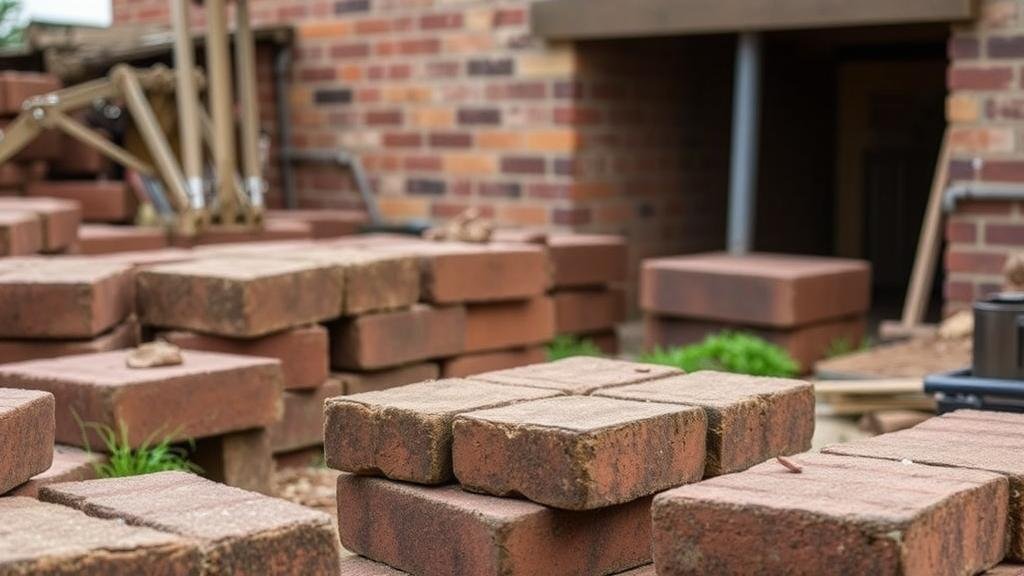Tracing Forgotten Brickworks Foundations for Construction Tool Finds
Tracing Forgotten Brickworks Foundations for Construction Tool Finds
The study of brickworks foundations provides invaluable insights into historical construction practices, technological advancements, and socio-economic conditions of various eras. This article delves into the methodologies for tracing these forgotten sites and the significance of the construction tools found therein. The focus is on the historical context of brickworks, evidence of construction tool finds, and case studies that exemplify successful tracing efforts.
Historical Context of Brickworks
Brickworks have played a pivotal role in the construction industry since antiquity, particularly during the industrial revolution when the demand for bricks surged. For example, in the late 19th century, London was home to more than 100 brickfields supplying materials for its rapid urban expansion. By understanding the evolution of brickworks, researchers can better appreciate the impact of these sites on urban development and construction technologies.
Methodologies for Tracing Brickworks Foundations
Tracing forgotten brickworks foundations involves a multi-disciplinary approach utilizing historical records, archaeological surveys, and field studies. Scholars typically employ the following methods:
- Historical Documentation: Analyzing old maps, local archives, and building permits can reveal the locations of former brickworks. For example, the 1884 Ordnance Survey Map details numerous brick kilns in South London.
- Geophysical Surveys: Techniques such as ground-penetrating radar (GPR) allow researchers to identify sub-surface structures without invasive digging.
- Excavation: Involves systematic digging to uncover brick foundations and associated artifacts, ensuring a meticulous documentation of each layer.
Significance of Construction Tool Finds
Construction tools found at brickwork sites can provide critical data on the operational methods used during production. These tools often highlight technological advancements and labor practices of the period. Notable examples include:
- The discovery of hand-held trowels used in bricklaying techniques at the 19th-century brickworks site in Swindon, England, indicating manual craftsmanship.
- Findings at the old Harris Brickworks in Buffalo, New York, revealed mechanized tools, suggesting a shift in industrial practices to improve efficiency and output.
Case Studies
Several case studies illustrate the successful tracing of brickwork foundations and the analysis of construction tools. Two particularly notable examples include:
The Old Richmond Brickworks, New South Wales
In 2016, archaeologists combined historical research with GPR technology to uncover the remains of the Old Richmond Brickworks, established in 1847. The site yielded a collection of early construction tools such as clay mixers and distinctive molds, providing insight into the methods used to produce bricks during Australias colonial period.
The Waltham Forest Brickworks, London
A collaborative project conducted in 2020 involved local historians and archaeologists to trace the Waltham Forest Brickworks foundation, operational from 1890 to 1965. Excavation revealed various construction tools, including early pneumatic drills, showcasing the transition from manual to mechanized brick production. This project not only enhanced understanding of local industrial heritage but also engaged the community in preserving historical sites.
Conclusions and Future Directions
The significance of tracing forgotten brickworks foundations extends beyond historical documentation; it contributes to the broader understanding of technological evolution in construction practices. The combination of traditional documentation methods with modern archaeological techniques, such as GPR and excavation, enhances the integrity and reliability of findings. Future research should focus on integrating digital technologies, such as Geographic Information Systems (GIS), to map and analyze brickworks sites more effectively.
As urban development continues to encroach on historical sites, the preservation of brickwork foundations and their associated artifacts is essential for enriching our understanding of past construction practices. By prioritizing this research, we safeguard cultural heritage and promote further studies in the field.
Actionable Takeaways
- Encourage collaboration between historians, archaeologists, and local communities in tracing forgotten brickworks.
- Invest in modern technologies such as GPR and GIS to enhance research methods.
- Document and preserve findings to contribute to the understanding of historical construction practices.
By leveraging both historical and contemporary methodologies, researchers can continue to uncover the rich histories embedded within forgotten brickworks, ultimately contributing to a greater appreciation of our construction history.



